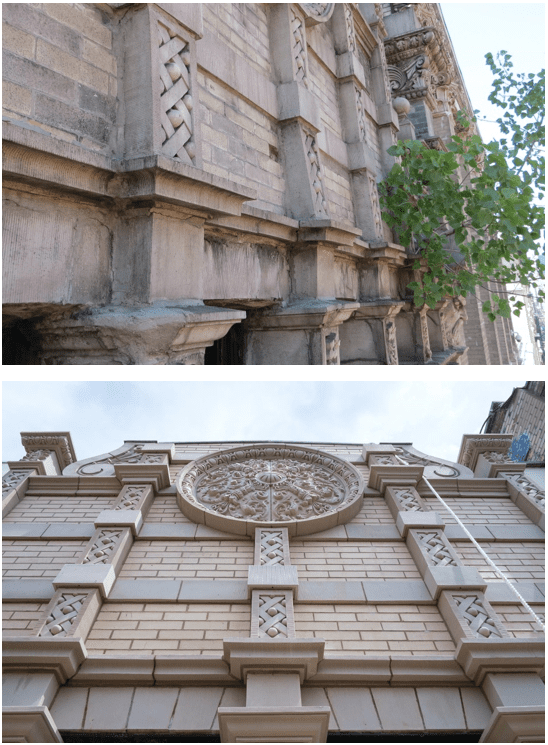
Essentially, exterior restoration comprises the repair and preservation of the building envelope—a process that is part science and part art.
Like good physicians, one of the Engineer or Architect (E/A’s) primary principles is “first, do no harm” (borrowed from the Hippocratic Oath). Also like a good physician, the E/A investigates the root cause of building envelope “diseases” rather than merely treating the symptoms.
In some cases, value can be added to a stable building envelope through nothing more invasive than a professional cleaning. In others, success means that leaks are remediated, masonry is properly secured, and structural integrity is restored.

We put ourselves in the owner’s shoes, asking, “what if it were our building?” We’d want a restoration where materials and assemblies behave as anticipated over time, rendering the envelope safe and watertight for years to come. Owners should expect the same outcome.
The irony of a successful exterior restoration project is that, once complete, the work is, or should be, virtually invisible. If successful, it shouldn’t be evident that restoration professionals were ever on site. (Of course, this maxim doesn’t hold in the case of total recladding of the facade).
When embarking on an exterior restoration project, key pre-construction issues fall into three main categories:
1) Technical issues: What repair work must be performed and where? What quantities are involved? Which materials will be used?
2) Financial issues: What will the project cost? How much cash will be required and when? How will the owner be protected against cost overruns?
3) Logistical issues: How long will the project take? Which sections will be tackled first? Where will the materials be stored? How long will a sidewalk shed or scaffolding be up? How will the owner be protected against scheduling overruns?
Some other considerations include:
Success in exterior restoration is measured by how well technical, financial, and logistical considerations are met. The “product” may be invisible, but the process is essential to building envelopes—and building owners.
14 Wall Street, 25th Floor, New York, NY 10005
(212) 505 1133
info@superstructures.com
Subscribe to SuperScript, our email newsletter.